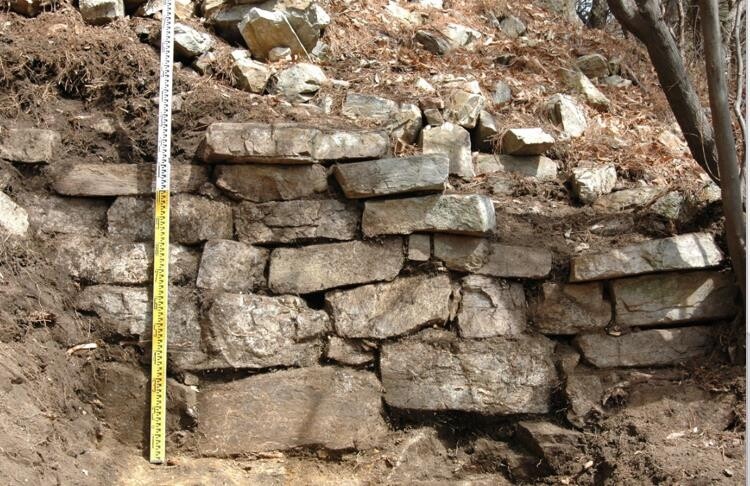 |
| ▲ This photo, provided by South Jeolla Province, shows the document. (PHOTO NOT FOR SALE) (Yonhap) |
 |
| ▲ This photo, shows the front view of Gokseong Seolsansanseong Fortress. (PHOTO NOT FOR SALE) (Yonhap) |
SEOUL, Aug. 5 (Yonhap) -- South Jeolla province announced on Thursday that it had designated three items as provincial cultural assets, namely "Documents Related to Munjaedo Boseong," "Songmaejeong pavilion in Suncheon," and "Gokseong Seolsansanseong Fortress."
The documents related to Boseong Munjaedo (tangible cultural property No. 355) are documents related to the people who enshrined King Injo of Joseon and protected Namhansanseong Fortress during the Byeongja Horan (Qing invasion of Joseon).
"Namhan diary," a diary during the Byeongja Horan, "Yuseo," a document related to the military and "Gyerok," a document which registered the contents of the reported official duties of the Seungjeongwon while working as a Naval Force Commander of Gyeongsangjwa-do has been confirmed.
These documents are of high academic value as they allow examination of the social and historical facts of the time from various angles.
The Suncheon Songmaejeong Wonrim (Monument No. 259) started when An Bang-jun (art name Usan), a figure during the Gwanghae-gun period of the Joseon Dynasty, built an altar on the east side of Usanjeonsa. Later, his descendant An Chang-hun built Song Maejeong in 1817 to commemorate the will of King Seonjo.
Along with a pond and a summerhouse along with the pavilion, the pavilion also has documentary heritages including hanging boards, market boards, a phrase written vertically for the purpose of sticking on a wall or a pillar and many more.
Considering the big space of the building and surrounding scenery, as well as records, it has a high historical and academic value as a separate pavilion.
Gokseong Seolsansanseong Fortress (cultural property material No. 295) has an estimated length of 1,300 m for its walls, 3 gates (east, west, and south), 4 building sites, and large water collection facilities.
Judging from the earthenware and roof tiles of the late Silla and early Goryeo periods, it seems that it was built around the 10th century and was used until the Joseon Dynasty.
It was built using the natural topography in the Unified Silla period, where Pogok-style, a method of building a fortress centering around the water streams, and sanbok-style, a method of building a fortress by lowering a part of the fortress wall down to the middle of a mountain.
It is evaluated to have a high academic value for studying Seonggwaksa and the government system of the time.
"For the systematic preservation and efficient use of cultural heritage, we plan to continuously promote the discovery of new cultural resources, expansion of designation of cultural assets, and promote the national cultural heritage," said Kim Young-shin, director of the Ministry of Culture, Sports and Tourism of the South Jeolla Province.
South Jeolla province also announced the designation of "Stone Standing Buddha in Goheung Seongbulsa Temple" and "Naju Lee Gwang-seon official certificate" as tangible cultural assets and cultural property material, respectively.
After collecting opinions during the 30-day notice period, it will be designated after the final deliberation by the Cultural Heritage Committee.
(END)
(C) Yonhap News Agency. All Rights Reserved

























![[가요소식] 보이넥스트도어, 신보로 3연속 밀리언셀러 달성](/news/data/20251025/yna1065624915905018_166_h2.jpg)








